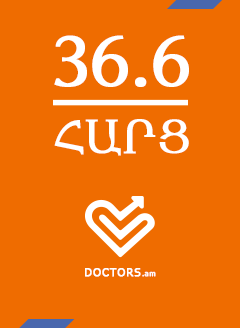Down syndrome (DS) or Down's syndrome, also known as trisomy 21, is a chromosomal condition caused by the presence of all or part of a third copy of chromosome 21. It is named after John Langdon Down, the British physician who described the syndrome in 1866.
Often Down syndrome is associated with a delay in cognitive ability and physical growth, and a particular set of facial characteristics. The average IQ of young adults with Down syndrome is around 50, compared to normal children with an IQ of 100. A large proportion of individuals with Down syndrome have a severe degree of intellectual disability. Males with Down syndrome are usually unable to father children, while females demonstrate significantly lower rates of conception relative to unaffected individuals. Women with DS are less fertile and often have difficulties with miscarriage, premature birth, and difficult labor. Without preimplantation genetic diagnosis, approximately half of the offspring of someone with Down syndrome also have the syndrome themselves. Men with DS are almost uniformly infertile, exhibiting defects in spermatogenesis.There have been only three recorded instances of males with Down syndrome fathering children.
Eye disorders are more common in people with DS. Almost half have strabismus, in which the two eyes do not move in tandem.
Signs and symptoms
The signs and symptoms of Down syndrome are characterized by the neotenization of the brain and body to the fetal state. Down syndrome is characterized by decelerated maturation (neoteny), incomplete morphogenesis (vestigia) and atavisms. Individuals with Down syndrome may have some or all of the following physical characteristics: microgenia (abnormally small chin), oblique eye fissures with epicanthic skin folds on the inner corner of the eyes (formerly known as a mongoloid fold), muscle hypotonia (poor muscle tone), a flat nasal bridge, a single palmar fold, a protruding tongue (due to small oral cavity, and an enlarged tongue near the tonsils) or macroglossia, "face is flat and broad", a short neck, white spots on the iris known as Brushfield spots, excessive joint laxity including atlanto-axial instability, excessive space between large toe and second toe, a single flexion furrow of the fifth finger, a higher number of ulnar loop dermatoglyphs and short fingers.
Growth parameters such as height, weight, and head circumference are smaller in children with DS than with typical individuals of the same age. Adults with DS tend to have short stature and bowed legs—the average height for men is 5 feet 1 inch (154 cm) and for women is 4 feet 9 inches (144 cm). Individuals with DS are also at increased risk for obesity as they age.
Most individuals with Down syndrome have intellectual disability, language skills show a difference between understanding speech and expressing speech, and commonly individuals with Down syndrome have a speech delay.












